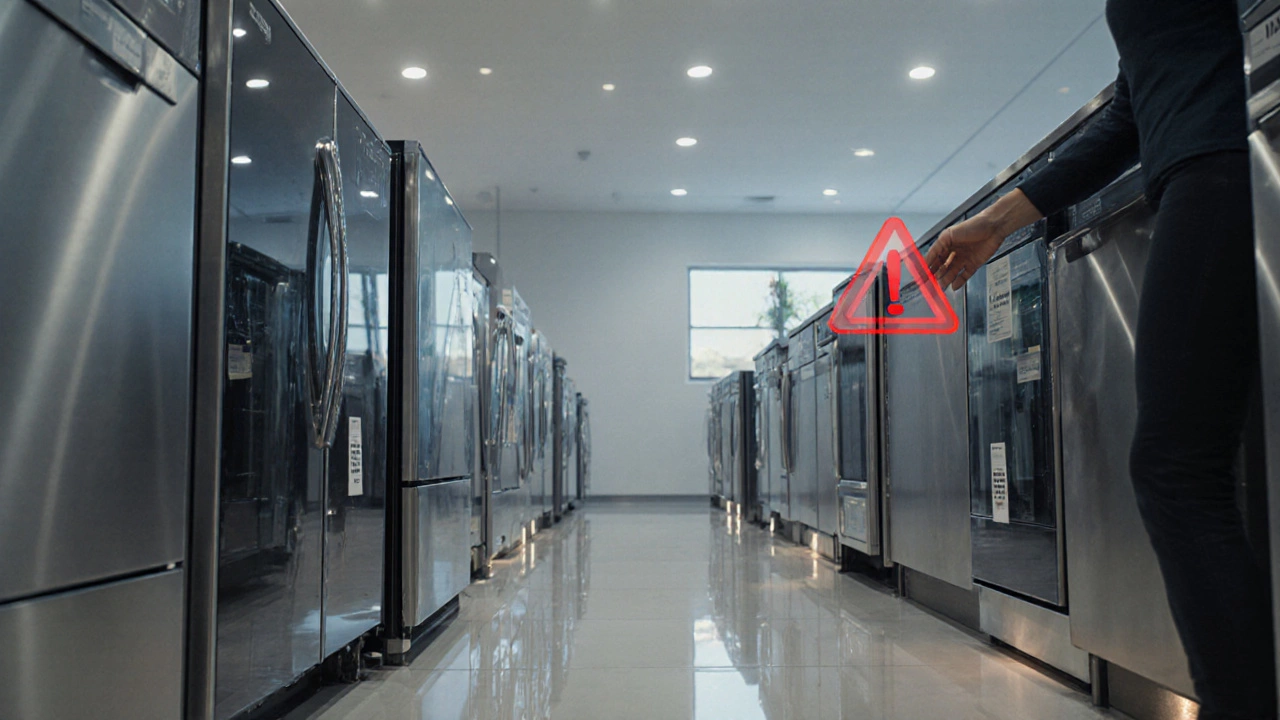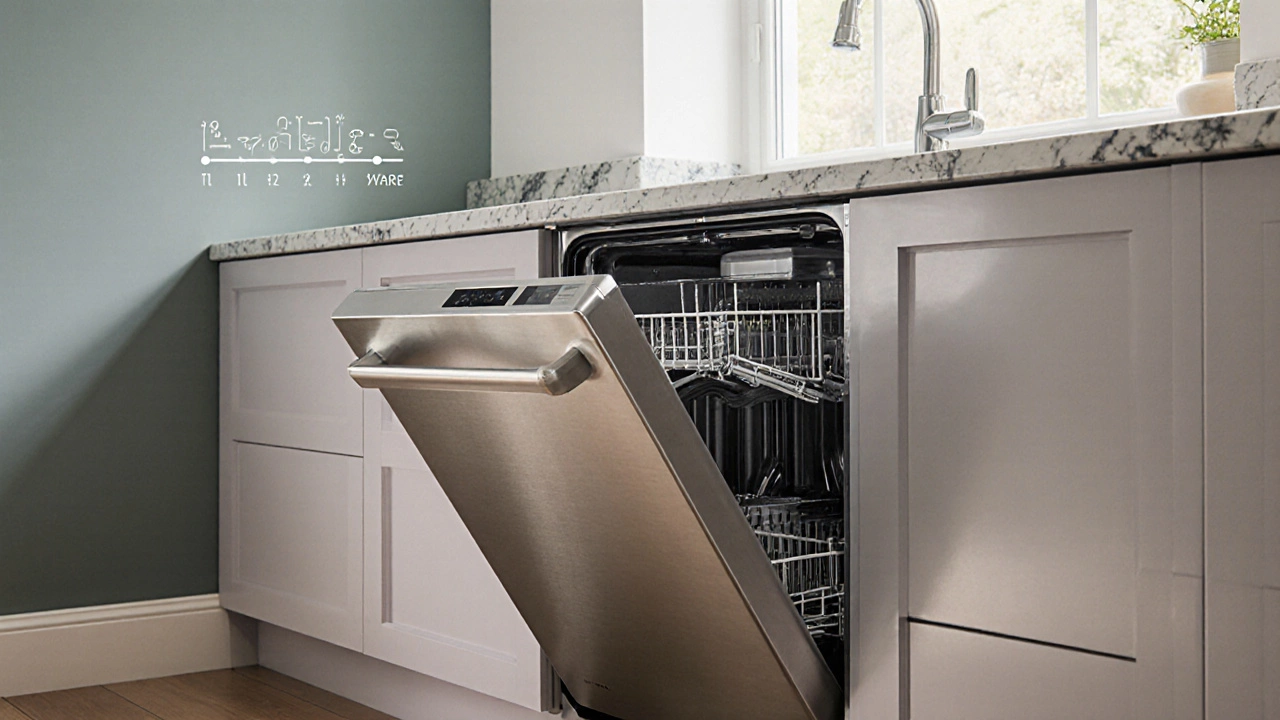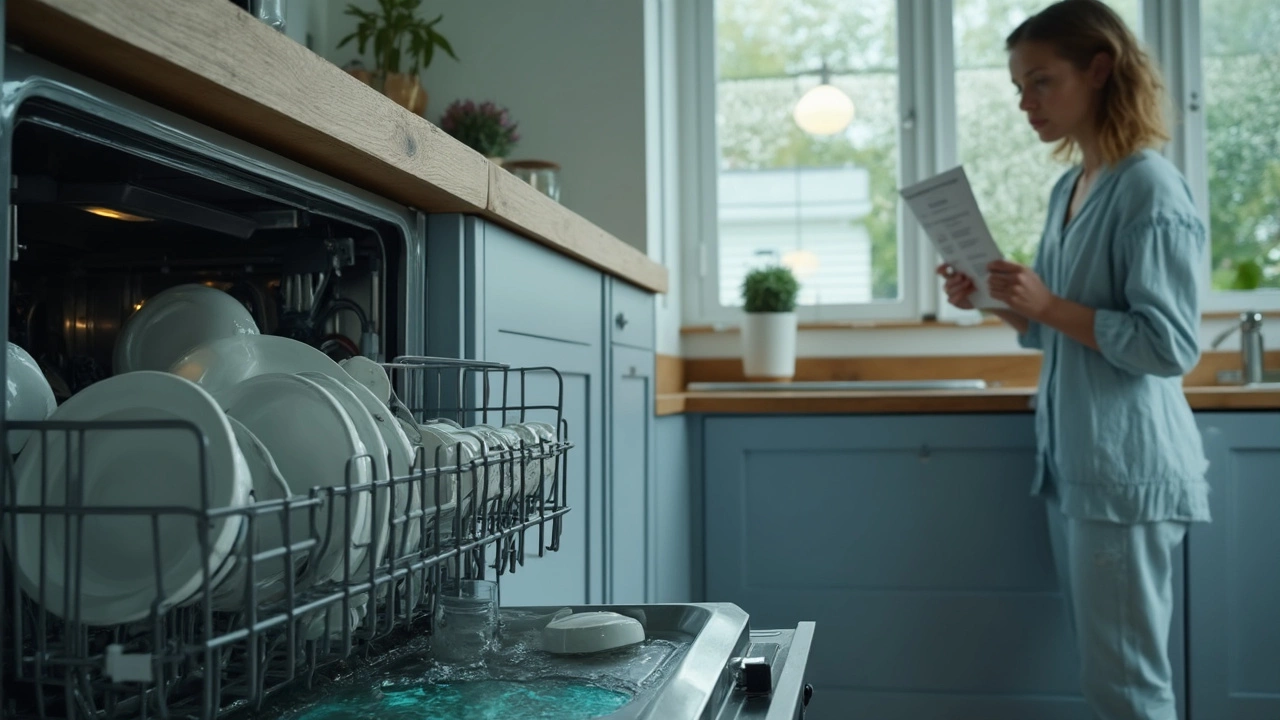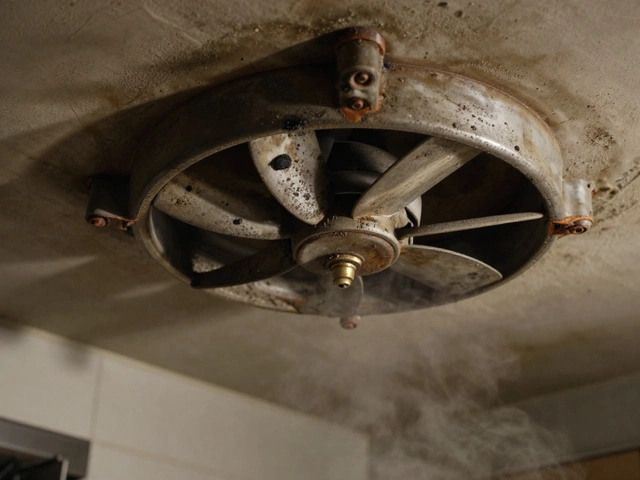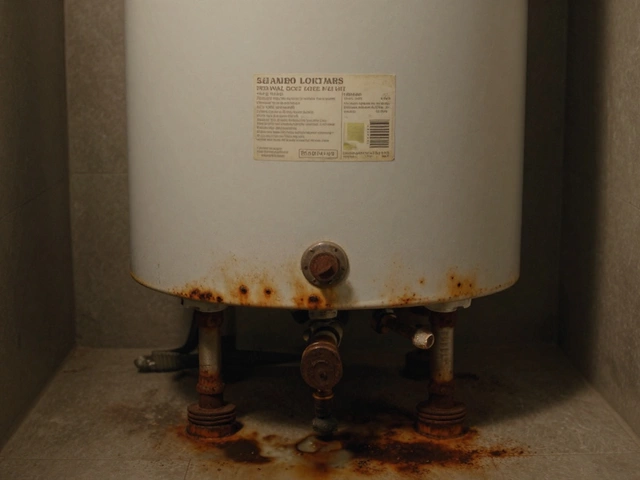Dishwasher Troubleshooter
Identify Your Dishwasher Issue
Select the symptoms you're experiencing to get brand-specific advice about common problems and solutions.
Select your symptoms
Symptom Analysis
Select symptoms to see your diagnosis.
When choosing a dishwasher brand is a type of appliance manufacturer that determines reliability, repair frequency, and overall ownership experience, it’s easy to get swayed by flashy ads. But not every name on the box lives up to the hype, and some models end up costing you more in service calls than they saved in convenience. Below is a straight‑forward guide to the brands that consistently rank low on reliability, the fault patterns you’ll see, and how to dodge a bad purchase.
Key Takeaways
- Five brands-Samsung, Whirlpool, LG, Frigidaire, and Hotpoint-show the highest repeat‑repair rates in recent NZ consumer surveys.
- Common failures include electronic control board glitches, door latch wear, and premature pump corrosion.
- Look for a solid warranty (at least three years) and a local service network before signing the contract.
- Regular cleaning of the filter and checking spray arm blockages can add two‑plus years to most machines, even the weaker ones.
- If your dishwasher already shows warning signs, schedule a technician visit early to prevent water damage.
Why the Brand Matters
Appliance manufacturers differ in component sourcing, quality‑control processes, and after‑sales support. A brand that outsources cheap electronic boards might sell a lower‑priced model, but those boards can fail after just a few cycles. Another brand might prioritize sleek design over robust door seals, leading to leaks that damage kitchen cabinets.
In New Zealand, the Office of Consumer Affairs publishes annual reliability data based on warranty claims. Those figures line up closely with user reviews on retail sites such as Noel Leeming and The Warehouse. When a brand repeatedly appears at the bottom of those lists, it’s a red flag.
Top Dishwasher Brands to Avoid
The following brands have earned a reputation for higher-than‑average repair incidents in the last three years. Each entry includes the most frequent fault, typical warranty length, and an anecdote from a local homeowner.
Samsung
- Common issue: Control‑panel PCBs corrupt after 18‑24 months, causing the machine to stop mid‑cycle.
- Warranty: Two years standard, optional extension to three years.
- Real‑world note: A Auckland family reported three service calls in a single year, each costing over $250.
Whirlpool
- Common issue: Door latch springs lose tension, leading to leaks during the rinse phase.
- Warranty: Two years, with a three‑year extended plan for a higher price.
- Real‑world note: Homeowners often notice water pooling under the appliance within the first two years.
LG
- Common issue: Pump motor housing corrodes when hard water isn’t filtered, leading to noisy operation and eventual failure.
- Warranty: Two years.
- Real‑world note: A Wellington couple replaced the pump three times in four years, each repair taking a week.
Frigidaire
- Common issue: Spray‑arm clogging due to inadequate drainage, causing spots on dishes.
- Warranty: One year for most models, occasionally two years on premium lines.
- Real‑world note: Customers frequently report the “no‑clean” error code after the first winter.
Hotpoint
- Common issue: Faulty thermostat leads to overheating and a burnt‑smell during the drying cycle.
- Warranty: One year standard.
- Real‑world note: A Christchurch household experienced a short‑circuit that tripped their main breaker twice.
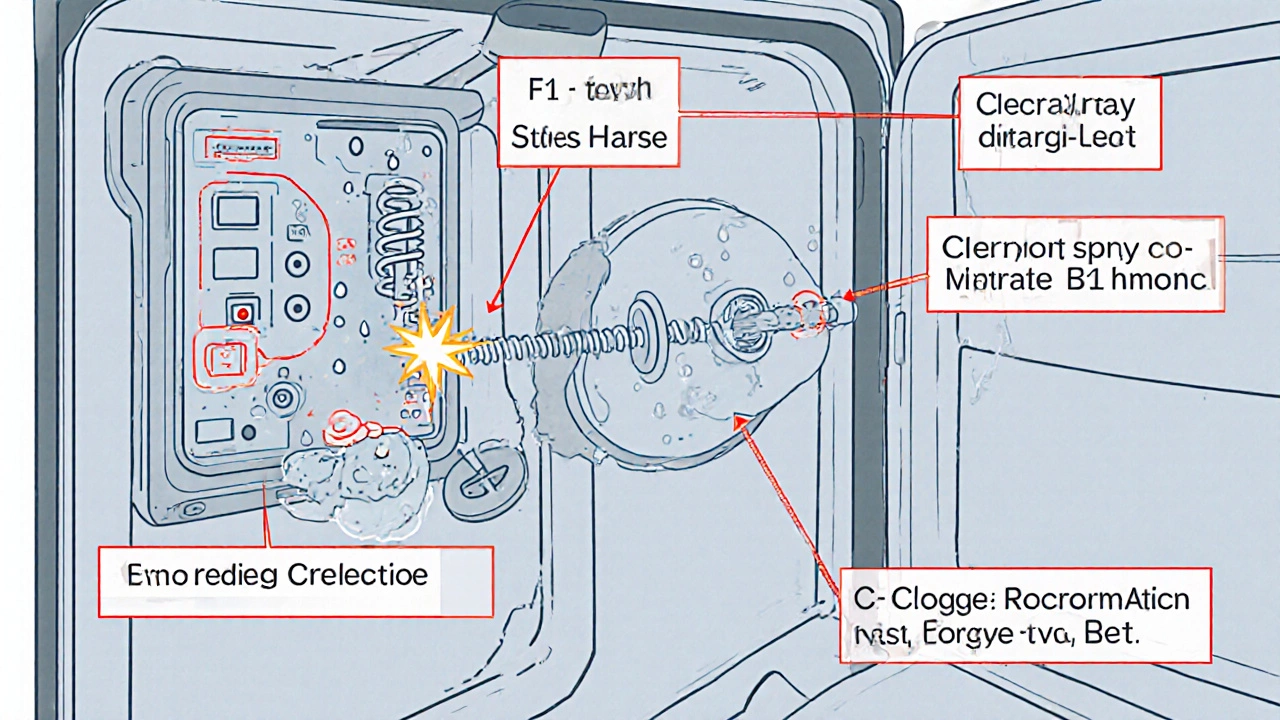
Common Failure Points Across Brands
Even reputable manufacturers can suffer from the same weak spots. Here’s a quick checklist of symptoms to watch for, regardless of the badge on the front:
- Repeated error codes on the display-especially “F1” or “E4” which usually signal electronic board errors.
- Water pooling at the bottom of the tub after a cycle-often a sign of a door seal or pump issue.
- Excessive noise during the wash-could be a loose spray arm, a worn motor bearing, or a foreign object caught in the pump.
- Dishware coming out still greasy-usually a clogged filter or a malfunctioning detergent dispenser.
- Drying performance dropping sharply after a few months-often linked to a failing heating element.
How to Spot a Risky Dishwasher Before You Buy
Spend a few minutes in the showroom or on the retailer’s product page, and ask these questions:
- What’s the length of the manufacturer’s warranty, and does it cover the electronic control board?
- Is there a local service centre that stocks genuine spare parts?
- Can the model’s user manual be downloaded to check maintenance steps?
- Do online reviews mention recurring issues like leaks or error codes?
- Is the dishwasher Energy Star rated? Higher efficiency models often use better‑quality components.
If the answer to any of those is “no” or “not sure,” consider moving on to a brand with a stronger track record-such as Bosch or Miele, which consistently rank high for reliability in New Zealand surveys.
Maintenance Tips to Extend Life (Even for the Weak Brands)
Regular care can shave years off a dishwasher’s lifespan, and it’s especially valuable if you already own one of the less‑reliable models.
- Clean the filter weekly. Food particles trapped there are a primary cause of pump failure.
- Run a hot‑water rinse monthly. This helps dissolve mineral buildup that can corrode pump housings.
- Inspect door seals. Wipe them with a damp cloth and replace if you see cracks.
- Check spray arms. Remove and rinse them under running water; use a toothpick to clear tiny holes.
- Use the right detergent. High‑efficiency pods can leave residue that blocks jets.
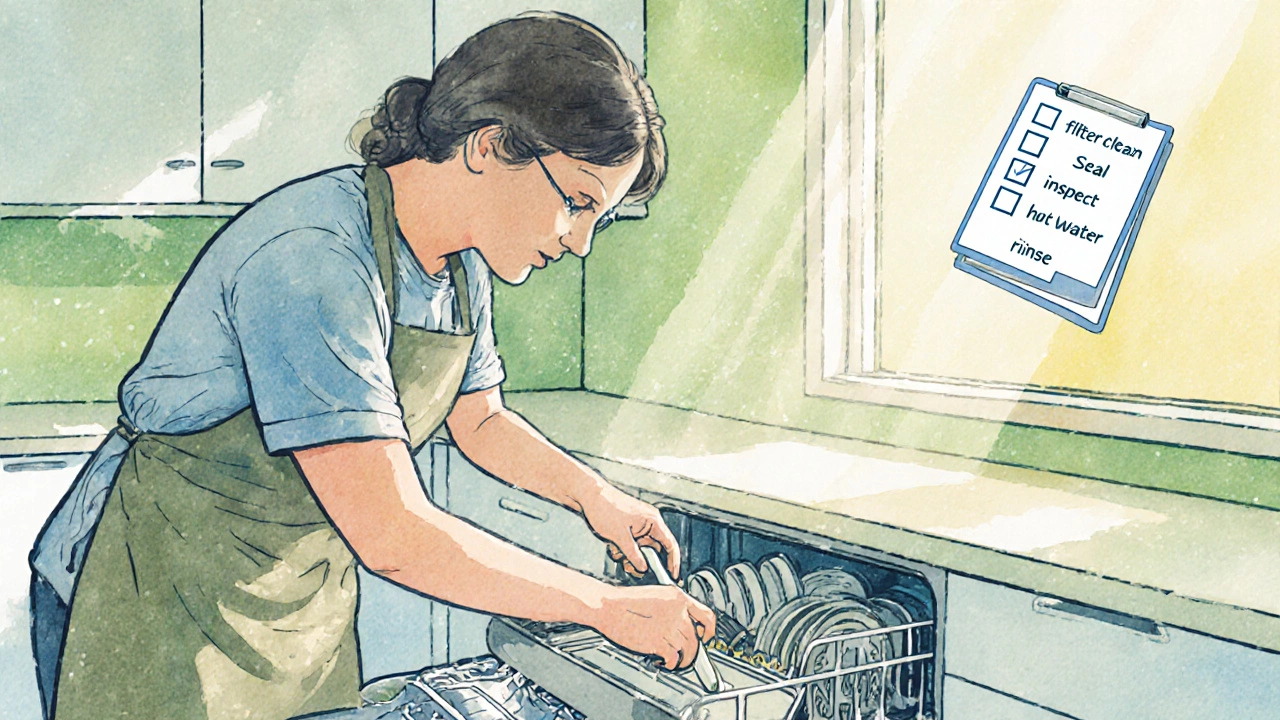
What to Do If Your Dishwasher Is Already Acting Up
Don’t wait for the problem to get worse. Here’s a step‑by‑step plan:
- Locate the error code in the user manual (or online). Most codes point to a specific component.
- Search for a reputable local technician. In Auckland, companies like Auckland Appliance Repair have certified technicians for most major brands.
- Ask for a written estimate before any work begins. This helps you decide whether repair or replacement makes sense financially.
- If the machine is still under warranty, contact the manufacturer’s support line first. Often they’ll cover parts and labour.
- Consider the total cost of repeated repairs. If you’ve spent more than 50 % of the original purchase price on fixes, a new, reliable model may be the smarter choice.
Quick Comparison of Brands Mentioned
| Brand | Average Repair Rate (%) | Typical Warranty | Most Reported Issue | Local Service Support |
|---|---|---|---|---|
| Samsung | 18.2 | 2 years (3 years optional) | Control‑board failure | Good - multiple authorised centres |
| Whirlpool | 16.7 | 2 years | Door latch leaks | Moderate - limited in smaller towns |
| LG | 15.4 | 2 years | Pump corrosion | Good - nationwide network |
| Frigidaire | 14.9 | 1 - 2 years | Spray‑arm clogging | Limited - mainly urban areas |
| Hotpoint | 13.8 | 1 year | Thermostat overheating | Sparse - few authorised dealers |
| Bosch | 8.3 | 2 years (3 years optional) | Rare - occasional motor wear | Excellent - broad coverage |
| Miele | 6.5 | 2 years | Very few - usually user‑error | Excellent - premium support |
Frequently Asked Questions
Which dishwasher brand has the longest warranty in New Zealand?
Bosch and Samsung both offer optional three‑year extensions, though the standard warranty is two years for most premium models.
Are cheap dishwashers worth the risk?
If the upfront price saves you less than $200, the extra repair costs over the first three years often erase any savings. Investing a bit more in a reliable brand usually pays off.
How can I tell if a dishwasher’s pump is failing?
Listen for a grinding or humming sound during the wash cycle, and check for water at the base of the appliance after it finishes. Those are classic pump‑failure signs.
Does regular cleaning really extend a dishwasher’s life?
Yes. Removing food debris from the filter and spray arms prevents motor strain and reduces corrosion, which are two of the most common failure causes.
What should I do if my dishwasher is still under warranty but the repair shop says parts aren’t covered?
Contact the manufacturer’s customer service directly. Provide the service invoice and ask for a warranty claim. Many brands will honor the repair if it’s a known defect.
